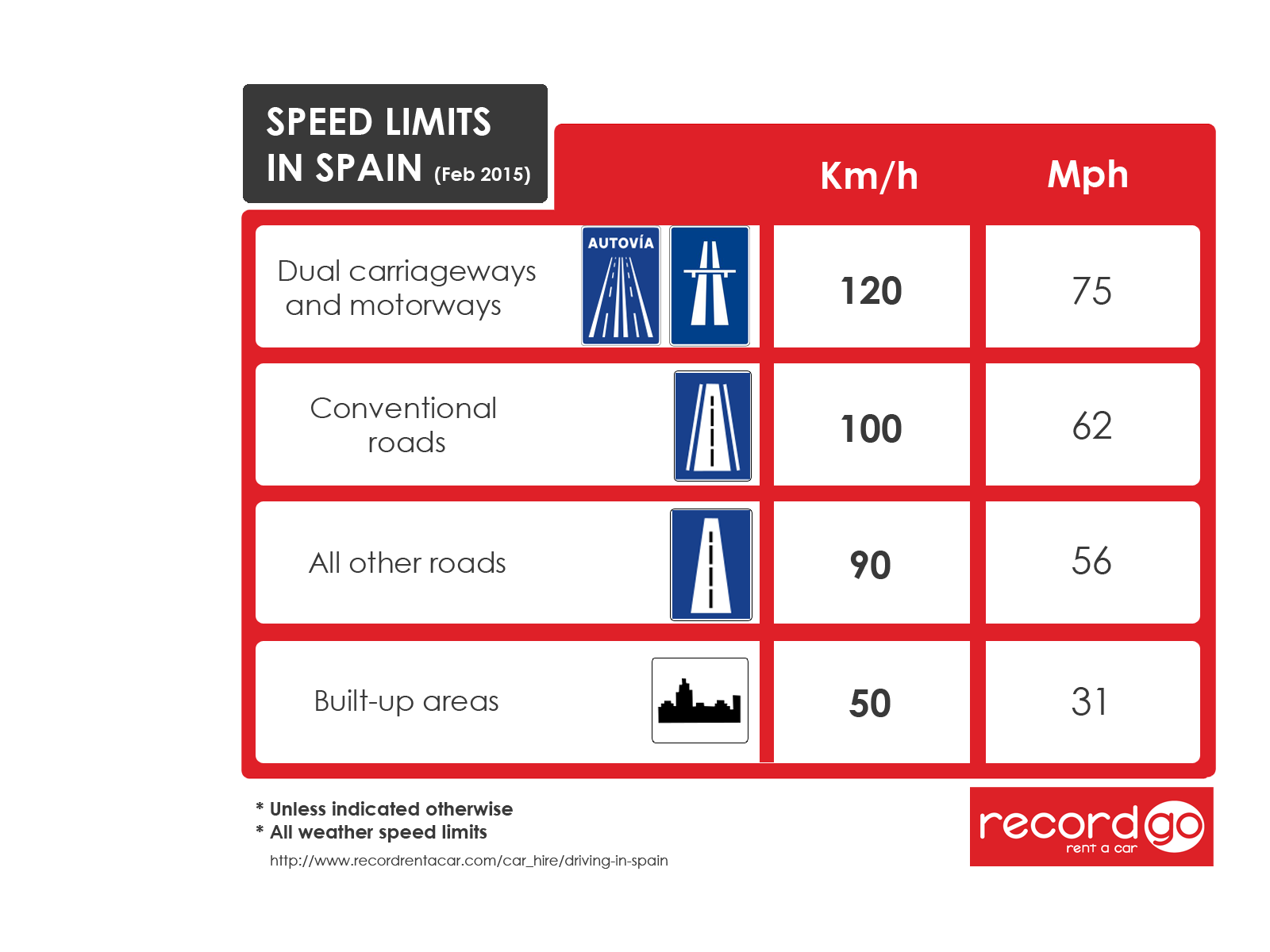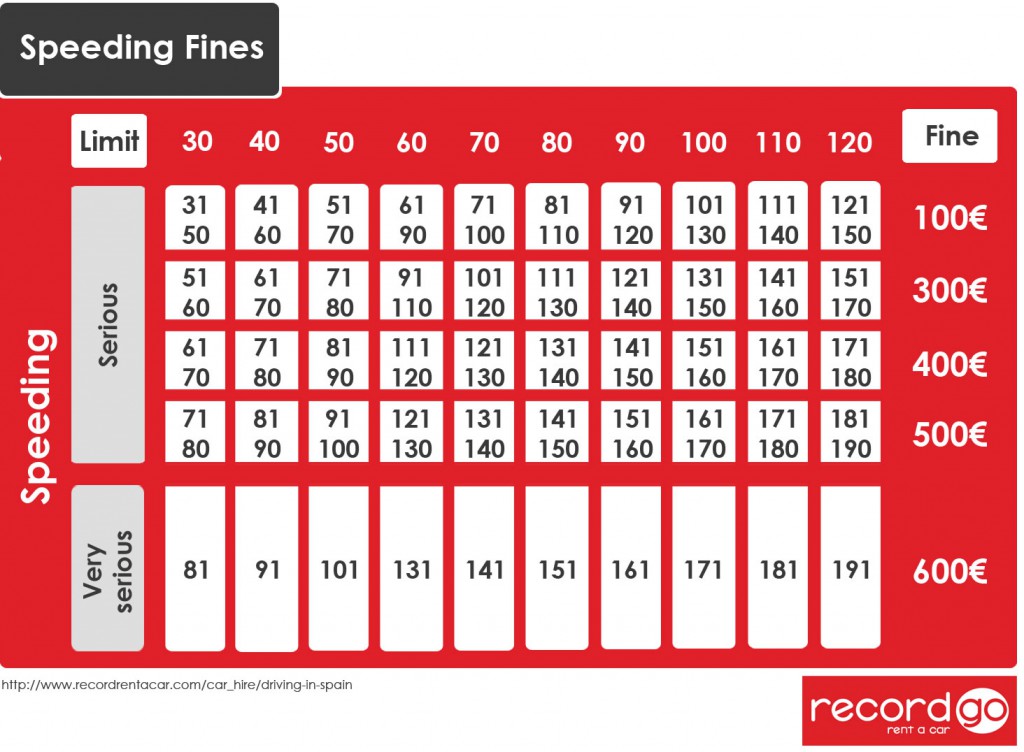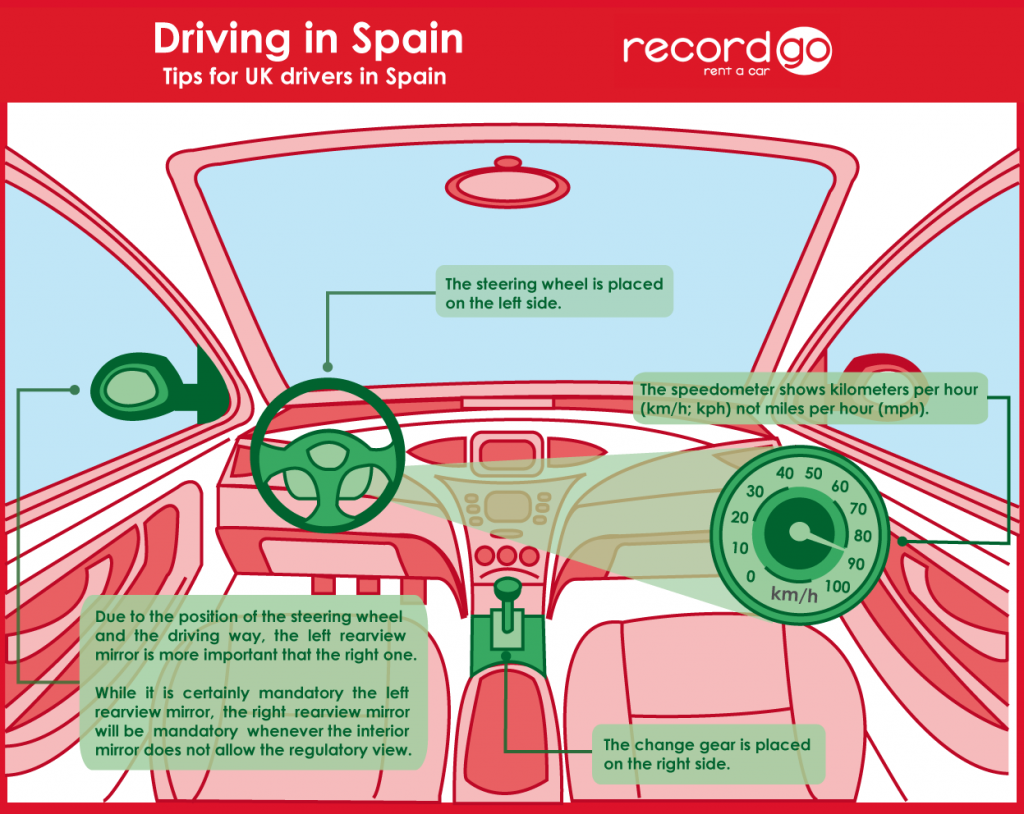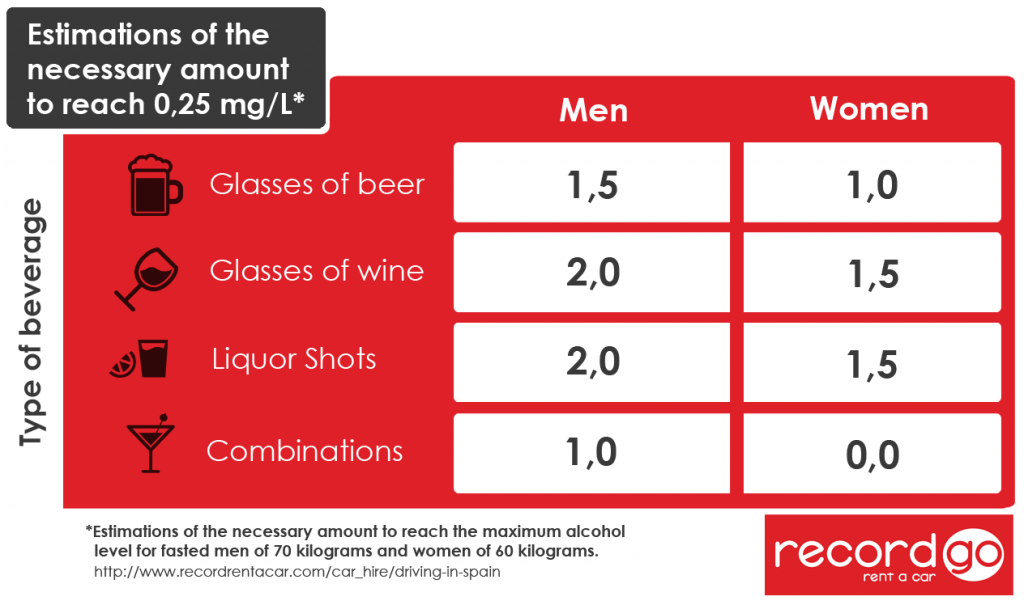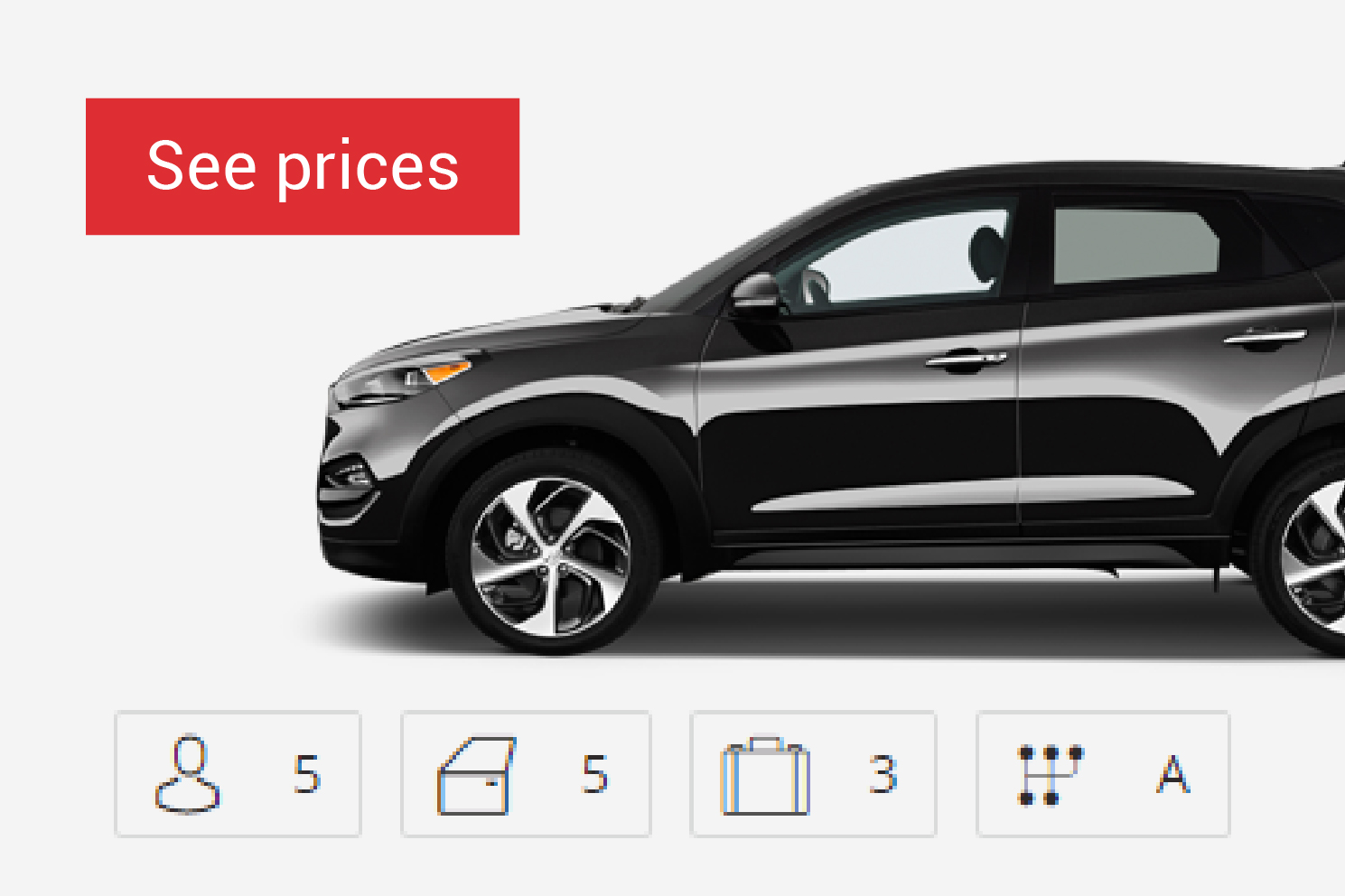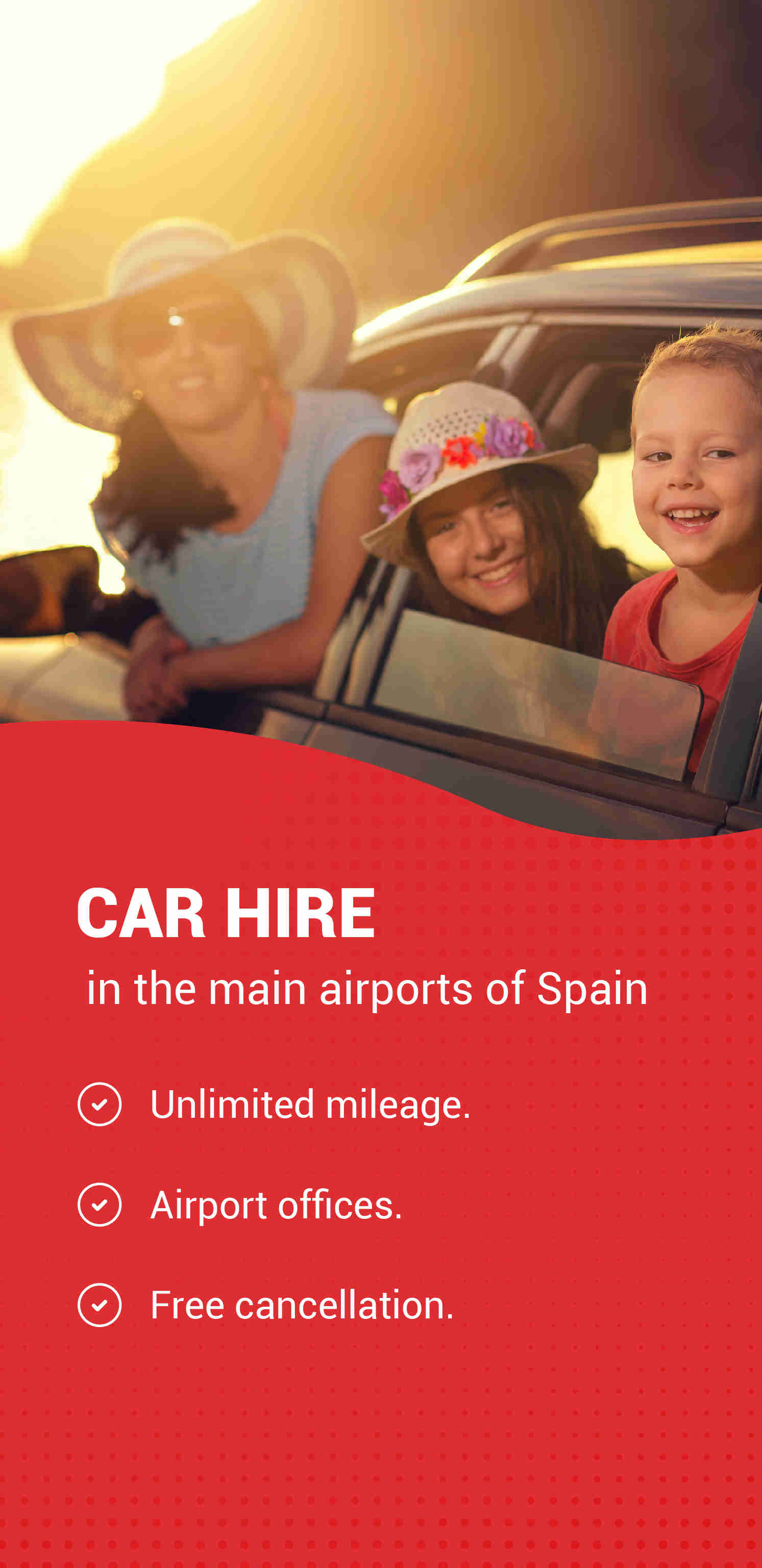SPEED LIMITS IN SPAIN
- Motorways: 120 kms/hour – 75 mph (90 kms/hour or 80 kms/hour for motor caravans and vehicles with trailer, depending on the weight of this).
- Dual carriage roads or with overtaking lanes: 100 Kms/hour – 62 mph (80 kms/hour for motor caravans and vehicles with trailers).
- Other roads outside built-up areas: 90 Kms/hour – 56 mph (70 kms/hour for motor caravans and vehicles with trailer).
- Towns and built-up areas: 50 Kms/hour – 31 mph
Speed radars are fairly usual and fines can be rather high.
Speeding Fines
Speeding tickets can be issued at the moment of the violation and drivers who do not reside in Spain must pay the ticket at the moment, unless the driver is able to provide the name or organization in Spain that guarantees the payment, such as a rental company.
In Spain, the speeding tickets get a 50 % off discount if paid within the first 20 days of the violation.
How many types of radars are there?
- Permanent: Installed on road porticos, booths, poles or any other physical support. They are marked on the roads as “Punto de control de velocidad” (Speed Checkpoint)
- Mobiles: set in vehicles on a permanent tripod or in helicopters such as the Pegasus. There are two types: with microwave technology –they can monitor up to six lanes and the laser one, which can be directed towards a vehicles with a range of up to 500 meters.
- Stretch radars: they are permanent and calculate the average speed of a vehicle between two points.
- Red –light radars: they are installed in traffic lights throughout the urban area. They capture vehicle that run red lights.
The use of radar detectors is prohibited in Spain.
GENERAL RULES DRIVING IN SPAIN
- Traffic drives on the right
- Vehicles are overtaken on the left
- Both exit ramps and access roads are on the right side at all times.
- Traffic drives counterclockwise in the roundabouts and vehicles must yield traffic in the roundabout, unless noted otherwise.
- Upon unmarked intersections, vehicles must yield the traffic on the right, unless we are in a priority road.
- Furthermore, drivers on a secondary road must yield drivers on main road, regardless of the approach direction.
- Vehicles on rails and emergency vehicles have priority over other road users.
- The minimum driving age is 18 years old, despite of the international license the driver might possess.
- Mobile phones are prohibited while driving.
- All passengers must fasten their seat belt.
- Traveling with children: Children up to the age of 12 and with a height of less than 135 cm traveling on the front seat of a car must be seated in a child restraint system adapted to their size and weight. Children taller than 135 cm may use an adult seat belt. Children with a height of less than 135 cm traveling on a back seat must also be placed in a child restraint system adapted to their size and weight, except when traveling in a taxi in an urban area.
- Unnecessary use of audible warning devices is prohibited.
THE VEHICLE
Differences with spanish vehicles
- The steering wheel is placed on the left side and the change gear is on the right.
- Both the indicator lever and the windshield wiper are in the exact same position.
- The speedometer shows kilometers per hour (km/h; kph) not miles per hour (mph). If you are planning on driving in Spain, we suggest you to take a look at the conversion tables for safety purposes.
- Due to the position of the steering wheel and the driving way, the left rearview mirror is more important that the right one. While it is certainly mandatory the left rearview mirror, the right rearview mirror will be mandatory whenever the interior mirror does not allow the regulatory view (the interior mirror will have to allow the view of at least a part of the horizontal and flat road from the horizon to up to 60 meters in the rear part and with a width of 20 meters).
What is mandatory to carry in the vehicles?
In order to drive in Spain, you will have to carry the following:
- Full, valid driver’s license (with paper counterpart). You can use your Great Britain (GB) or Northern Ireland driver’s license in all European Union (EU) or European Economic Area (EEA) countries, and Switzerland. Included Spain
- Proof of insurance (third party or above). Your UK insurance should give automatic third party cover. We would recommend you to contact your insurers to check you have adequate cover.
- Proof of ID (Passport)
- Proof of ownership (V5C Certificate). If you are driving a rental car, this requirement will not be necessary.
By law, you have to carry the following objects:
- Reflective jackets (although not mandatory to carry, someone walking on the road or hard shoulder can be fined if not wearing one)
- Warning triangle (compulsory in every vehicle with 4 wheels or more) (Residents must carry 2)
- Headlamp beam deflectors (depending on your car, you will either need deflector stickers or have to adjust the beam manually)
- Motorcyclists: Crash helmets are compulsory for riders of motorbikes, motorcycles, trikes and quads, unless these are equipped with seat belts. Motorcycles on the road must have their lights on at all times.
ALCOHOL LIMITS
In Spain drivers cannot drive if the blood alcohol level exceeds 5 grams per liter in blood or 25 mg/L in a breath alcohol test.
In case of drivers with a driver’s license of less than two years and professional drivers, the maximum level is 0,3 grams per liter in blood, which equals 0,15 mg/L of a breath alcohol test.
Getting to know how much the alcohol equals to is fairly difficult; it depends on different factors, namely weight, gender, being fasted or not.
EMERGENCY TELEPHONE NUMBERS
By dialing 112, you can get assistance for the following services:
- Ambulance
- Fire fighters
- Police and Guardia Civil
PARKING
- Blue zone: indicated with signs and/or blue marks on the ground. They are fee-paying parking spaces that have a limited time (usually two hours). It is free of charge during the night and there is no time limit (between 8pm and 8am, although this depends on the town regulations)
- Green zone: it is indicated with green signs on the ground. These areas are similar to the blue zone but with a shorter limit of time. The fee is usually more expensive than the blue ones.
- Yellow signs: a yellow sign, either on the curb or on the road’s edge means that parking is prohibited or with a temporal restriction (indicated in this case with signs) in the side where the line is painted and all through it. If there is a zig zag sign, this means there is a parking prohibition for vehicles in general because it is reserved for an special use that does not imply long term of any vehicle. Generally, these will be found in stopping areas (not parking areas) of buses or to vehicle loading and unloading.
The vertical signs that prohibit parking are the following:
The signs can be accompanied with an indication that informs about the prohibition is only for an specific period of time (hours or days).
+ Enjoy your trip through Spain and Portugal:
- What to see in Benidorm with yor car hire Alicante
- What to do in Marbella, the centre of Costa del Sol
- Get to know Portugal with your car rental in Lisbon airport
- Get to know Portugal with your car hire in Porto airport

